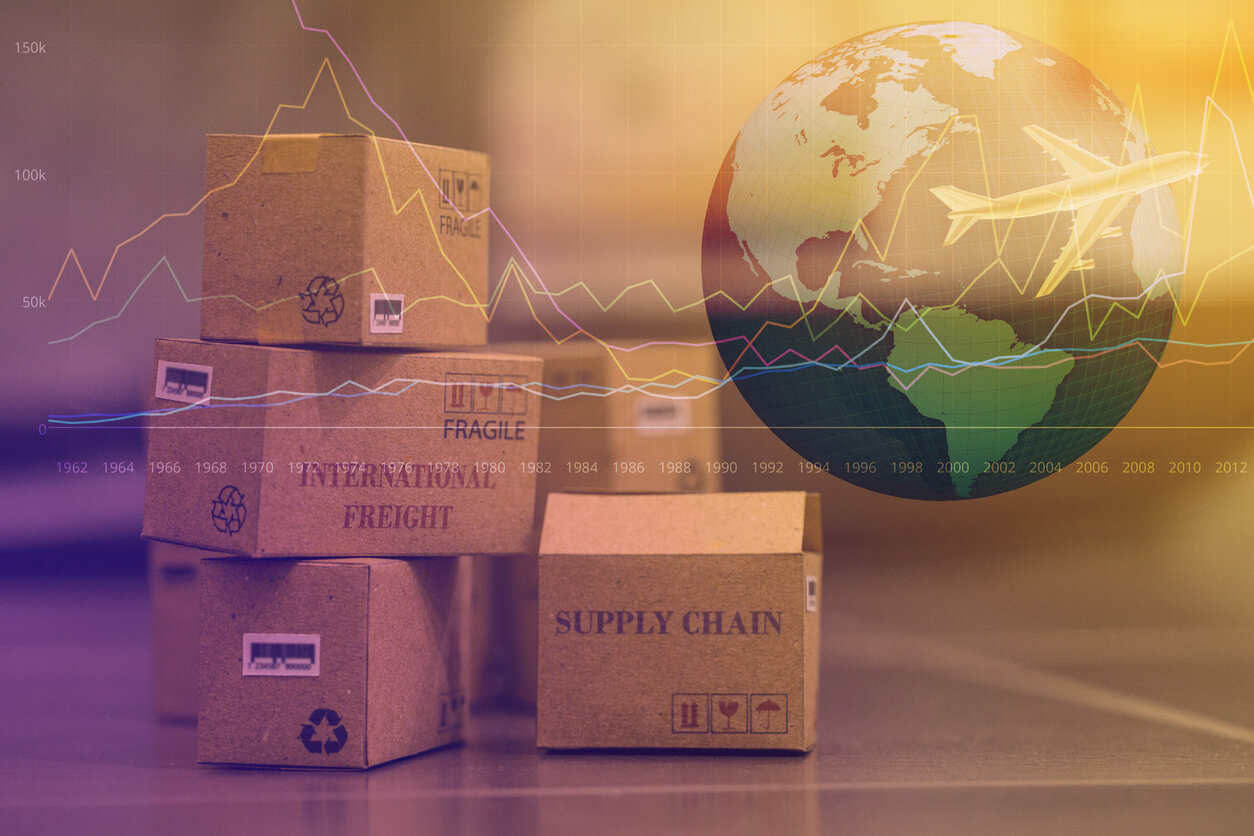The Future is Frozen: A Closer Look at Cold Chain Shipping 4.8.24
Subscribe Here!
Distribution challenges around the coronavirus vaccine have brought cold chain shipping to the forefront of the transportation conversation. Here’s what logistics operators should know.
In November, Pfizer and Moderna gained approval for two separate — but almost equally effective — coronavirus vaccines. The news prompted a global sigh of relief, followed by ripples of concern in the logistics and storage industries. It was reported that the vaccine from Pfizer needed to be stored at -70 degrees Celsius and the Moderna vaccine needed to be stored at -20 degrees Celsius.
The vaccines use mRNA, a protein that initiates the immune response, that must be kept extremely cold to avoid the dissolution of its lipid coating. Both vaccines may ultimately prove to be shelf-stable under less drastic conditions, but given the urgent nature of the COVID-19 pandemic, risk-taking is not an option.
An expert on health and supply chains told NPR that distribution under these conditions is possible, citing other vaccines that required cold storage, such as the Ebola vaccine, as evidence.
So how does this work? In Pfizer’s case, the vaccine is stored in flat boxes (similar to pizza boxes) with dry ice that is changed every five days for up to 15 days. This helps eliminate the need for special freezers, but Pfizer and its carriers must be rigorous in upholding these standards during the logistics process.
All of the focus on cold storage around the coronavirus vaccine brings to mind the importance of cold chain logistics, or cold chain shipping, as a whole. In this article, we will take a closer look at cold chain shipping and discuss:
-
What is cold chain shipping?
-
The tools that make cold chain shipping work
-
Cold chain shipping and red tape
-
Supply chain risks with cold chain shipping
What is cold chain shipping?
True to its name, cold chain shipping is the technical term for transporting items that require a low temperature during the process. With the rise of meal kit delivery services like Hello Fresh and Blue Apron, as well as nationwide shipments of restaurant menu items via services like Gold Belly, cold chain shipping continues to innovate and expand in the industries it touches. Like all facets of the supply chain process, cold chain shipping has not been immune to the effects of the COVID-19 crisis.
The category of products that require cold chain shipping is vast and includes perishable items, medical supplies, and more. Temperatures for cold chain shipping are dependent on shipment and can range from chilled to completely frozen.
The tools that make cold chain shipping work
The methods used to chill cold chain shipping are customized based on the shipment, so supply chain operators and business owners need to have a deep understanding of what they are shipping in order to ensure the cold chain technologies match up with the requirements of the item(s).
In addition to the dry ice that is so crucial to coronavirus vaccine shipping and rollout, other cold chain shipping technologies include gel packs, liquid nitrogen, insulated quilts, and insulated vans. Dry ice and liquid nitrogen are among the most extreme tools, while gel packs are more commonly seen in shipments that require refrigeration more than extreme freezing, such as the Hello Fresh box previously mentioned.
Red tape around cold chain shipments
Like all types of transportation, cold chain shipping is subject to rules and regulations as determined by the FDA, DOT, TSA, and other organizations. The FDA in particular is highly involved in the supply chain when it comes to transporting items that require cold storage. Any operator using cold chain shipping should be aware of the government regulations and private regulations, such as those laid out by the International Air Transport Association.
It is also crucial to understand the method of transportation required for the shipment. For example, pharmaceutical shipments are increasingly reliant on ocean freight rather than air.
Supply chain risks with cold chain shipping
The supply chain risks associated with cold chain shipping are as unique as the technologies involved in the logistics process. Delays are the biggest risk, as time lost during the shipping process can be deadly for everything from vaccines to perishable food products. Tracking is essential, as is factoring in time spent on loading docks and at the warehouse.
Packaging can also present a risk, as inadequate packing can result in leaks and damage. The wrong cold chain shipping tools can cause the item itself to become dangerous or ineffective.
Final thoughts on cold chain shipping
When dealing with cold chain shipping, rigorous documentation and the right technology are essential. Both human attention to detail and automated tools, such as temperature sensors, play a role.
Cold chain shipping will continue to rise in importance long after COVID-19 vaccines are distributed. It will be prominent on a global scale and technology will likely continue to evolve. Regulations will also tighten.
If you have questions about cold chain shipping and how it affects your logistics strategy, your budget for 2021, or how it will factor into your day-to-day operations, contact Resource Logistics Group for assistance. We are supply chain experts who provide expert advice while allowing you to maintain control of your operation.



